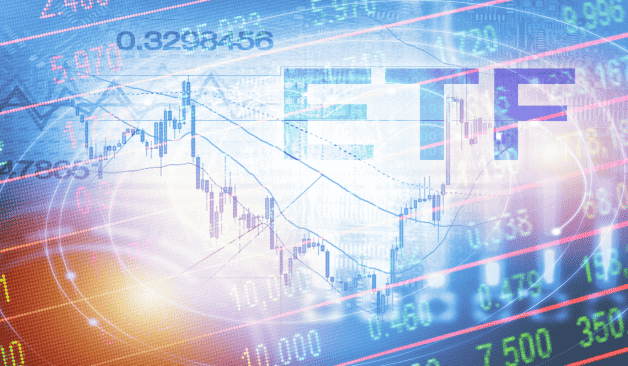
What are ETFs and how do they work?
Do you like investing in stocks? Do you enjoy investing in mutual funds? You may be investing in the market through both options but have complained that these have limitations. For sure they do, and therefore, we have something called Exchange Traded Funds or ETFs. In this article, we will talk about everything you must know about ETFs.
What are ETFs?
As mentioned above, ETFs are investment options that combine features of stocks and mutual funds. Think of an ETF as a basket of stocks. For example, an ETF named 'Nifty 50 ETF' might hold the same 50 stocks that are part of the Nifty 50 index.
ETFs provide you with instant diversification across multiple companies in a single investment. Similar to mutual funds, you hold investments in different companies when you invest in ETFs.
How are they similar to stocks? It is an interesting part. As you know, you get mutual fund units only at the end of the day, but with ETFs, you can buy them during the trading window. You can buy or sell units (shares) of an ETF at the prevailing market price, which fluctuates based on supply and demand throughout the day.
How do ETFs work?
If we get into the details, the working of ETFs is a bit complicated. To keep things simple, we look at the high-level working of ETFs:
Step 1: Creation and Redemption
Authorized Participants (or APs - usually large financial institutions) create new ETF shares by delivering a basket of the underlying assets to the ETF sponsor. In return, they receive ETF shares of equivalent value. APs redeem ETF shares by returning them to the ETF sponsor in exchange for a basket of the underlying assets. The process of creation and redemption helps keep the ETF’s market price in line with the NAV of its underlying assets.
Step 2: Trading on Stock Exchanges
Investors can buy and sell ETF shares on stock exchanges throughout the trading day at market prices, just like individual stocks. The market price of an ETF share fluctuates throughout the trading day based on supply and demand, and the value of the underlying assets.
Step 3: Tracking an Index or Asset
Most ETFs aim to replicate the performance of a specific index (like the Nifty50) by holding the same or a representative sample of the index’s constituent securities.
Advantages of ETFs
With the basic understanding of ETFs, it would be easy for you to understand the benefits of ETFs:
- Diversification: With a single ETF like Nifty50, you gain exposure to multiple companies, reducing risk compared to holding individual stocks.
- Transparency: The holdings of an ETF are typically published daily, allowing for transparency about what you are invested in.
- Cost-effective: One of the biggest advantages of ETFs is that their expense ratios are generally lower compared to actively managed mutual funds.
- Flexibility: You can trade ETFs throughout the day, offering more flexibility than mutual funds.
Disadvantages of ETFs
- Tracking Error: An ETF's performance might slightly deviate from the underlying index it tracks. It may be due to fees and trading costs.
- Limited Control: You do not have direct control over the specific securities held within an ETF unlike picking individual stocks. Even if you know that X companies are not good in an index, you still hold them.
What are the types of ETFs?
Once you learn to invest in ETFs, the beauty is that you can create your entire portfolio using them - they come with different options. Let us look at the types of ETFs:
- Equity ETFs: These track major stock indices such as the Nifty 50, BSE Sensex, or other sector-specific indices.
- Bond ETFs: Invest in government securities (G-Secs) or sovereign bonds. Examples include Bharat Bond ETF. They may also include bonds issued by corporations.
- Gold ETFs: Invest in physical gold or gold futures, offering a way to invest in the precious metal without holding physical gold. Example is Nippon India ETF Gold BeES.
- International ETFs: Provide exposure to global markets outside India. These ETFs invest in stocks listed on international markets or track global indices. Example - Motilal Oswal Nasdaq 100
- Thematic ETFs: Focus on specific investment themes such as ESG (Environmental, Social, and Governance), infrastructure, etc. Example - Nifty 100 ESG Sector Leaders.
The cost involved in ETFs
We mentioned earlier that the costs involved with ETFs are usually lower than index funds and actively managed funds. However, there is a cost, and before you start investing via ETFs, let us understand the different costs involved;
Expense Ratio: An expense ratio tied to ETFs similar to mutual funds. It is an annual fee charged by the fund manager to cover the operational costs of running the ETF. It is expressed as a percentage of the ETF's assets under management (AUM). An ETF with an expense ratio of 0.5% would charge Rs 5 for every Rs. 1,000 invested in the ETF annually.
Transaction Costs: These are the fees associated with buying or selling units (shares) of an ETF. They typically involve brokerage charges levied by your trading platform or broker. Depending on your broker, the transaction costs can be a fixed fee per trade or a percentage of the trade value.
While expense ratios are deducted from the ETF's overall holdings, transaction costs are borne directly by you when buying or selling.
How to invest in ETFs?
If you are interested in investing in ETFs, here are the steps you need to follow:
- Open a Brokerage Account: If you don't have an account, open a brokerage account with ICICI Direct.
- Fund Your Account: Once your brokerage account is open, the second step is to deposit funds to start investing.
- Research and Choose an ETF: There are numerous ETFs available, as we have seen. Each ETF has its investment objective and underlying holdings. Please research different ETFs to find ones that align with your investment goals and risk tolerance.
- Place Your Order: Once you have chosen an ETF, you can place a buy order through your brokerage platform. You will specify the number of units (shares) you want to purchase and the order type (e.g., market order or limit order).
Difference between MF and ETF
We want to ensure that understand that MF and ETFs are different. So, in this section, we lay out all the differences between the two options so there are no doubts:
|
Parameter |
Mutual Funds |
ETFS |
|
Control |
More control over specific holdings |
Limited, follows underlying index |
|
Price Discovery |
If you place your order before the cut-off time, you get the end of the day NAV. |
You can buy anytime during the trading window |
|
Expense Ratio |
Higher |
Lower |
|
Other Expenses |
With mutual funds, the only charge you have to pay is the stamp duty charge, which is 0.005% of the overall purchase amount. |
Since ETFs are like stocks, you need to pay the brokerage charge every time you buy and sell an ETF. The charge depends on your broker. |
Before you go
The count of ETFs is increasing with every passing quarter. Unlike a few years back, today investors have a variety of ETFs.
They can be a powerful tool if you seek diversification and ease of trading. However, like every other investment, you must conduct your research and understand the underlying risks involved before making decisions.
 Top Mutual Funds
Top Mutual Funds



